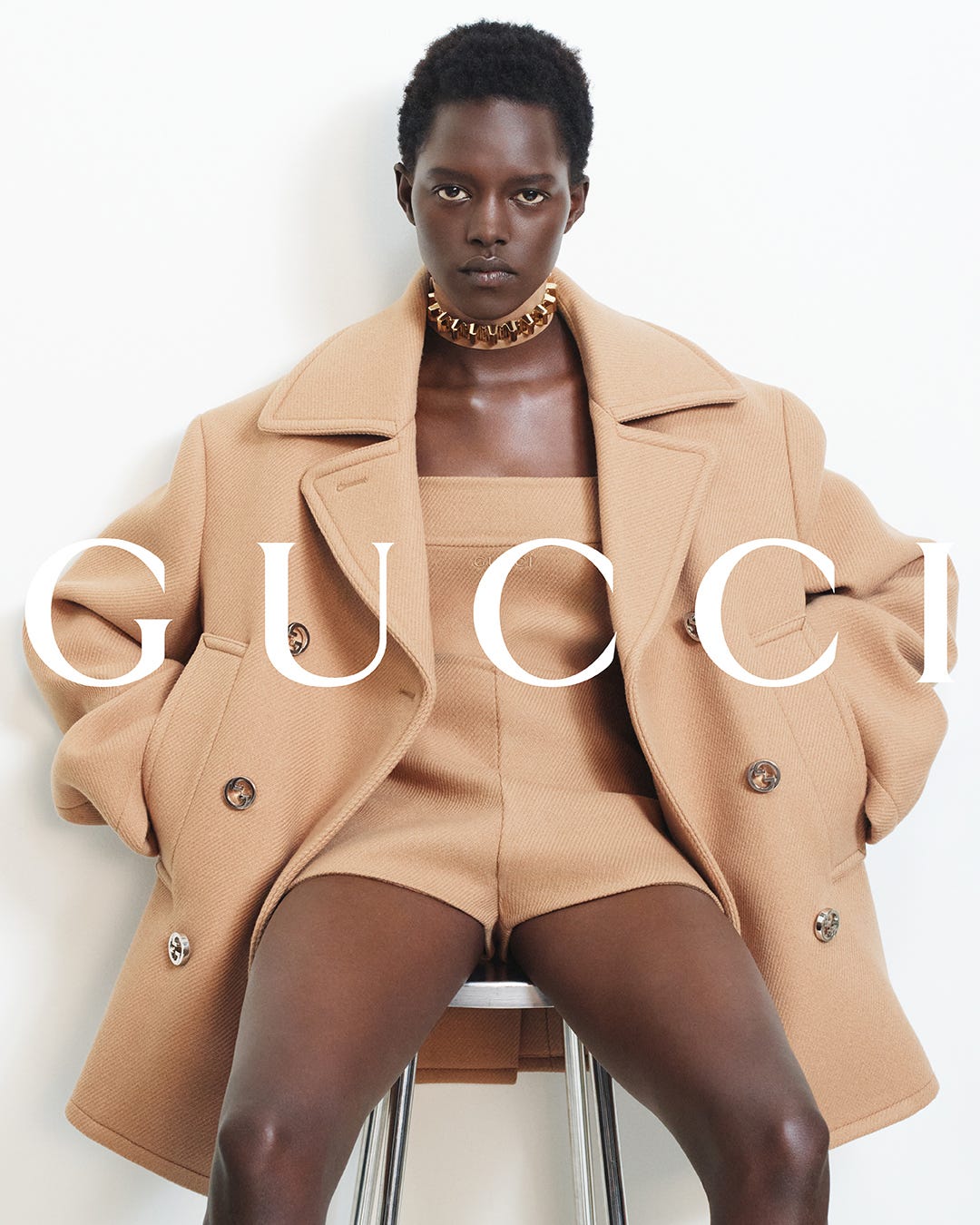Fashion Campaigns Look Uniformly Flat
In a sea of sameness, nothing stands out, everything merges.
Fabio Becheri is a respected man in the fashion industry. A brand advisory and marketing executive, he counts nearly two decades of experience at Gucci and its owner Kering. Naturally, it didn’t go unnoticed when, this summer, he wrote on his 16k-follower Linkedin account: Isn’t it ironic how the image of the entire fashion industry is in the hands of an extremely restricted group of talents? The same Photographers, Art Directors, Stylists, Hair and Make up Artists keep on gravitating from one fashion brand to the other. […] It says a lot about the paradox of an industry supposed to be fostering creativity but simultaneously protecting the status quo
That behind-the-scenes uniformity (don’t even get me started on models) leads, inevitably, to an homogeneous, uninspired aesthetic. Listen, I’m tired of seeing the same formulaic, flat luxury fashion campaigns. I’m tired of the seriousness and the conformism and the blandness. I’m tired of the classic poses and the neutral backdrops and the unseasoned faces. In a sea of sameness, nothing stands out, everything merges. Gone are the days when fashion campaigns were true artworks, that we would tear out of magazines and stick on our bedroom walls. 90s/early 00s ads were something. Highly editorialized, impactful, sometimes subversive. If you weren’t born after the French football team won its first World Cup, I’m pretty sure you vividly remember that G-shaped shaved kewchi for Gucci.

It’s no coincidence that, in American Vogue’s December issue, the most striking picture was lensed by a photographer who doesn’t belong to the small fashion world. With the help of a film crew of 40, Gregory Crewdson captured guest-editor Marc Jacobs in a cinematic style, sitting on a couch in his Frank Lloyd Wright house. There, the eyes hanging in the void, in an Hitchcockian eerie atmosphere.
Something magical happens when you call on image makers from elsewhere. They bring a new creative breath, a fresh perspective, free from the industry standards and codes. They explore, disrupt, energize. Did you see the pictures taken by Magnum photographer Harry Gruyaert for Saint Laurent’s SELF 07 art series in 2022? They are insanely beautiful. With an interplay of reflections, movements, colors and overlays. Here, the products are assimilated to a broader system that transcends them, a whole universe backed by a strong narrative. As they should always be.
Of course, some brands play the game well but overall, aaahnn, it’s pretty boring.
In Los Angeles, where I live, various flavorless fashion ads are currently popping up along Sunset Boulevard. At the intersection with Crescent Heights, a multitude of posters from Miu Miu’s Holiday 2024 campaign adorns a big hardwood palisade: an unemotional Emma Corrin lies there, in a minimalist, almost empty setting, doing literally nothing. Yay. So festive. What happened to Miu Miu’s cheeky spirit?
It wouldn’t be fair, though, to blame it all on creatives. After all, the guys have guidelines to follow. With an ever-growing need for profitability, most brands want the distracting noise to be removed, for the products to grab all the attention. They’re locking themselves in a ‘totalitarian’ advertising discourse, simple, efficient, upstaging the artistic purpose. No storytelling, no depth. Just the goods isolated, set in majesty. Buy me, buy me.
In fact, that unimaginative approach also reveals a fear. The fear of losing followers. Either with something too bold/conceptual (not comprehensible for everyone), or controversial (seen as too suggestive, stereotyped, tone-deaf…). In today’s society, you can get cancelled in a snap. So we tip-toe, we play it safe. Take Balenciaga, for example. Since the child-porn scandal, the Parisian house has traded its signature spikiness for muted, consensual campaigns, with practically no prop in sight.
I’m not anti-minimalism. Minimalism can be powerful. Especially when imbued with a sense of irony, a tension between sophistication and absurdity. No need to do a lot. Just loosen up a little bit. Luxury fashion takes itself too seriously. Playfulness can be subtle, arising from a gesture, a facial expression or contrasting surroundings, as Bottega Veneta did with Jacob Elordi mimicking a bunny or its Spring/Summer 2024 campaign, shot in children’s playgrounds (way more interesting than a postcard setting). Incorporating a small quirky element can give a whole new dimension to a picture.
There’s actually something else. In a world that celebrates ephemerality and constantly demands new content, do brands still have time and energy to be creative? Many seem to think that it’s not worth it. Yet, with the abundance of images and decline in attention, consumers value the unexpected, the different. The only way to break through the clutter.
Creativity is not just another part of luxury fashion. It is its very essence. Its magical power. If brands lose it, I guess it’s game over.
By Marine Desnoue.
Thanks for reading The Creative Brief! If you like this newsletter, don’t hesitate to spread the word about it 🫶
And if you haven’t done yet so, hit the subscribe button so you never miss anything!










How dare you! … Just kidding , its’ oh so true. In the lands of conformity we do not trust.
Keep going on.
Very true! I used to love looking at fashion campaigns when I was younger, now they really don't pull me in. I hope we see a return to creativity soon!